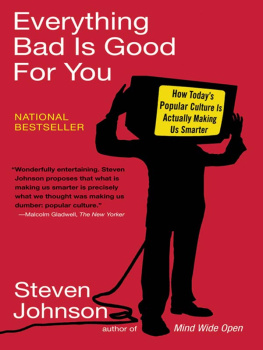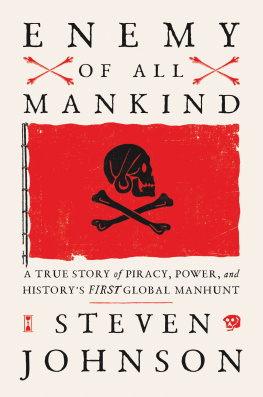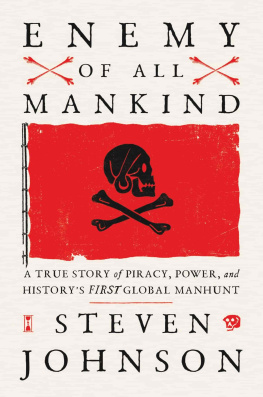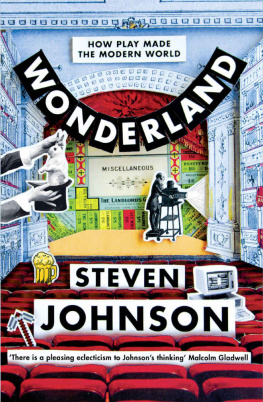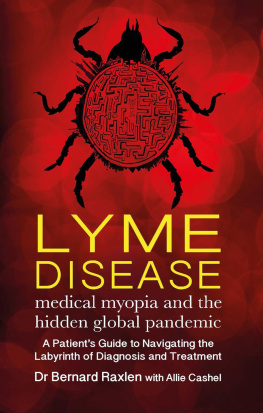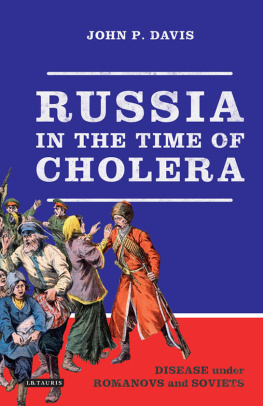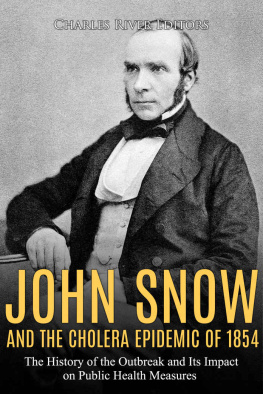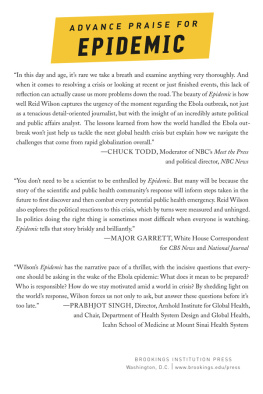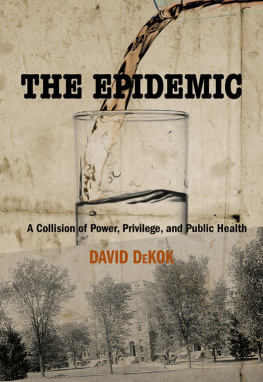The
GHOST MAP
A street, an epidemic and
the hidden power of
urban networks
S TEVEN J OHNSON

PENGUIN BOOKS
PENGUIN BOOKS
Published by the Penguin Group
Penguin Books Ltd, 80 Strand, London WC2R 0RL , England
Penguin Group (USA) Inc., 375 Hudson Street, New York, New York 10014, USA
Penguin Group (Canada), 90 Eglinton Avenue East, Suite 700, Toronto, Ontario, Canada M4P 2Y3
(a division of Pearson Penguin Canada Inc.)
Penguin Ireland, 25 St Stephens Green, Dublin 2, Ireland (a division of Penguin Books Ltd)
Penguin Group (Australia), 250 Camberwell Road,
Camberwell, Victoria 3124, Australia (a division of Pearson Australia Group Pty Ltd)
Penguin Books India Pvt Ltd, 11 Community Centre,
Panchsheel Park, New Delhi 110 017, India
Penguin Group (NZ), 67 Apollo Drive, Rosedale, North Shore 0632, New Zealand
(a division of Pearson New Zealand Ltd)
Penguin Books (South Africa) (Pty) Ltd, 24 Sturdee Avenue,
Rosebank, Johannesburg 2196, South Africa
Penguin Books Ltd, Registered Offices: 80 Strand, London WC2R 0RL , England
www.penguin.com
First published in the United States of America by Riverhead Books 2006
First published in Great Britain by Allen Lane 2006
Published in Penguin Books 2008
1
Copyright Steven Johnson, 2006
All rights reserved
The moral right of the author has been asserted
The passage from Walter Benjamins Theses on the Philosophy of History
is from Illuminations, translated by Harry Zohn.
A list of illustration credits can be found on page 300.
Except in the United States of America, this book is sold subject to the condition that it shall not, by way of trade or otherwise, be lent, re-sold, hired out, or otherwise circulated without the publishers prior consent in any form of binding or cover other than that in which it is published and without a similar condition including this condition being imposed on the subsequent purchaser
978-0-14-191577-7
For the women in my life:
My mother and sisters, for their amazing work
on the front lines of public health
Alexa, for the gift of Henry Whitehead
and Mame, for introducing me to London so many years ago
CONTENTS
|
Monday, August 28
THE NIGHT-SOIL MEN
|
Saturday, September 2
EYES SUNK, LIPS DARK BLUE
|
Sunday, September 3
THE INVESTIGATOR
|
Monday, September 4
THAT IS TO SAY, JO HAS NOT YET DIED
|
Tuesday, September 5
ALL SMELL IS DISEASE
|
Wednesday, September 6
BUILDING THE CASE
|
Friday, September 8
THE PUMP HANDLE
|
Conclusion
THE GHOST MAP
|
Epilogue
BROAD STREET REVISITED
|
|
|
|
|
|
|
A Klee painting named Angelus Novus shows an angel looking as though he is about to move away from something he is fixedly contemplating. His eyes are staring, his mouth is open, his wings are spread. This is how one pictures the angel of history. His face is turned toward the past. Where we perceive a chain of events, he sees one single catastrophe which keeps piling wreckage and hurls it in front of his feet. The angel would like to stay, awaken the dead, and make whole what has been smashed. But a storm is blowing in from Paradise; it has got caught in his wings with such a violence that the angel can no longer close them. The storm irresistibly propels him into the future to which his back is turned, while the pile of debris before him grows skyward. This storm is what we call progress.
Walter Benjamin, Theses on the Philosophy of History
This is a story with four protagonists: a deadly bacterium, a vast city, and two gifted but very different men. One dark week a hundred fifty years ago, in the midst of great terror and human suffering, their lives collided on Londons Broad Street, on the western edge of Soho.
This book is an attempt to tell the story of that collision in a way that does justice to the multiple scales of existence that helped bring it about: from the invisible kingdom of microscopic bacteria, to the tragedy and courage and camaraderie of individual lives, to the cultural realm of ideas and ideologies, all the way up to the sprawling metropolis of London itself. It is the story of a map that lies at the intersection of all those different vectors, a map created to help make sense of an experience that defied human understanding. It is also a case study in how change happens in human society, the turbulent way in which wrong or ineffectual ideas are overthrown by better ones. More than anything else, though, it is an argument for seeing that terrible week as one of the defining moments in the invention of modern life.
Monday, August 28

THE NIGHT-SOIL MEN
I T IS AUGUST 1854, AND LONDON IS A CITY OF SCAVENGERS . Just the names alone read now like some kind of exotic zoological catalogue: bone-pickers, rag-gatherers, pure-finders, dredgermen, mud-larks, sewer-hunters, dustmen, night-soil men, bunters, toshers, shoremen. These were the London underclasses, at least a hundred thousand strong. So immense were their numbers that had the scavengers broken off and formed their own city, it would have been the fifth-largest in all of England. But the diversity and precision of their routines were more remarkable than their sheer number. Early risers strolling along the Thames would see the toshers wading through the muck of low tide, dressed almost comically in flowing velveteen coats, their oversized pockets filled with stray bits of copper recovered from the waters edge. The toshers walked with a lantern strapped to their chest to help them see in the predawn gloom, and carried an eight-foot-long pole that they used to test the ground in front of them, and to pull themselves out when they stumbled into a quagmire. The pole and the eerie glow of the lantern through the robes gave them the look of ragged wizards, scouring the foul rivers edge for magic coins. Beside them fluttered the mud-larks, often children, dressed in tatters and content to scavenge all the waste that the toshers rejected as below their standards: lumps of coal, old wood, scraps of rope.


